Stephen Wallace
Using Causal Analysis for Conceptual Deep Learning Explanation
Jul 10, 2021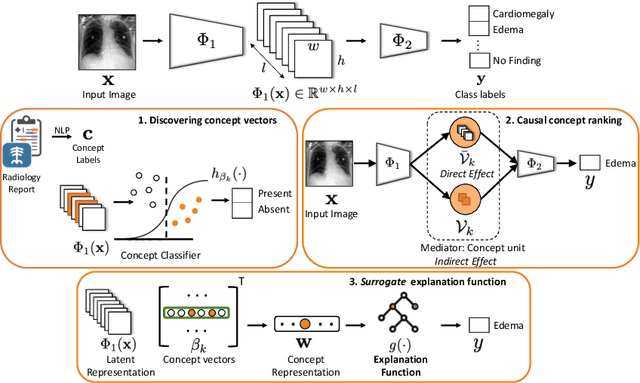

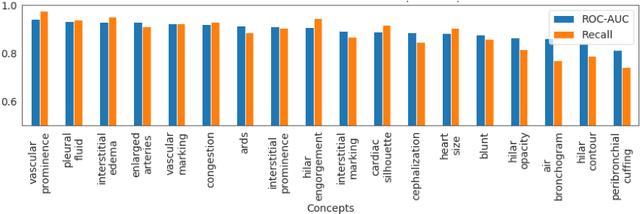
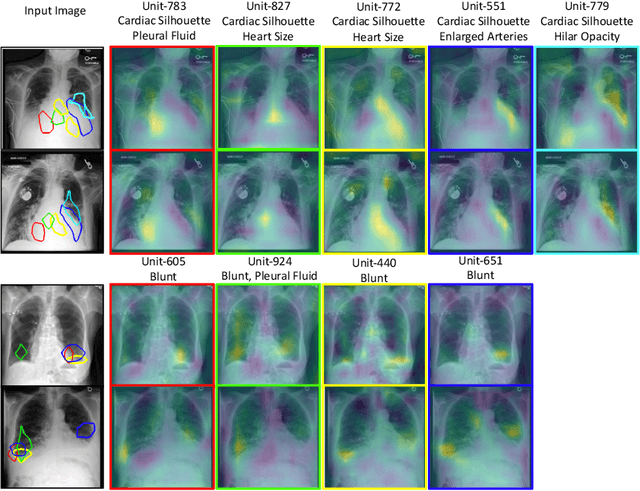
Abstract:Model explainability is essential for the creation of trustworthy Machine Learning models in healthcare. An ideal explanation resembles the decision-making process of a domain expert and is expressed using concepts or terminology that is meaningful to the clinicians. To provide such an explanation, we first associate the hidden units of the classifier to clinically relevant concepts. We take advantage of radiology reports accompanying the chest X-ray images to define concepts. We discover sparse associations between concepts and hidden units using a linear sparse logistic regression. To ensure that the identified units truly influence the classifier's outcome, we adopt tools from Causal Inference literature and, more specifically, mediation analysis through counterfactual interventions. Finally, we construct a low-depth decision tree to translate all the discovered concepts into a straightforward decision rule, expressed to the radiologist. We evaluated our approach on a large chest x-ray dataset, where our model produces a global explanation consistent with clinical knowledge.
Explaining the Black-box Smoothly- A Counterfactual Approach
Jan 11, 2021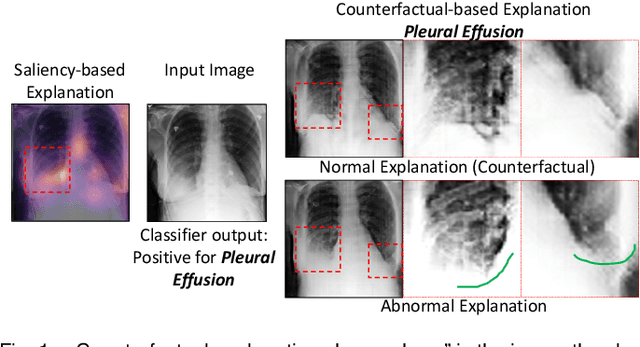
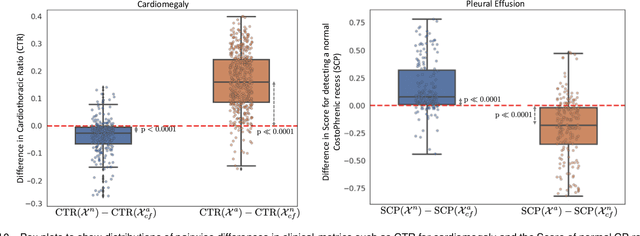
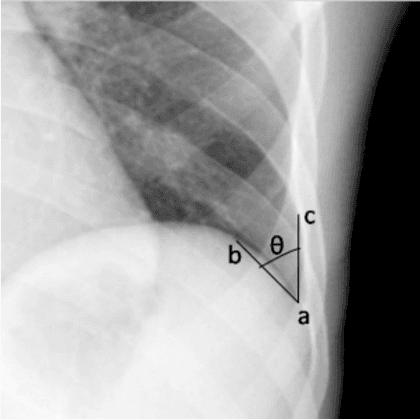
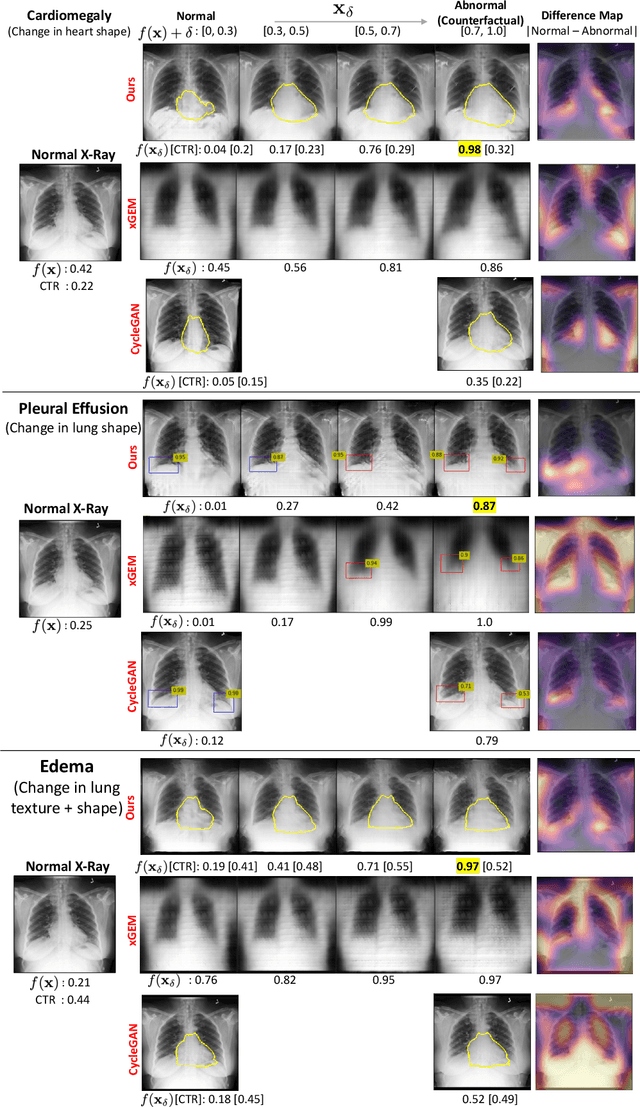
Abstract:We propose a BlackBox \emph{Counterfactual Explainer} that is explicitly developed for medical imaging applications. Classical approaches (e.g. saliency maps) assessing feature importance do not explain \emph{how} and \emph{why} variations in a particular anatomical region is relevant to the outcome, which is crucial for transparent decision making in healthcare application. Our framework explains the outcome by gradually \emph{exaggerating} the semantic effect of the given outcome label. Given a query input to a classifier, Generative Adversarial Networks produce a progressive set of perturbations to the query image that gradually changes the posterior probability from its original class to its negation. We design the loss function to ensure that essential and potentially relevant details, such as support devices, are preserved in the counterfactually generated images. We provide an extensive evaluation of different classification tasks on the chest X-Ray images. Our experiments show that a counterfactually generated visual explanation is consistent with the disease's clinical relevant measurements, both quantitatively and qualitatively.
 Add to Chrome
Add to Chrome Add to Firefox
Add to Firefox Add to Edge
Add to Edge